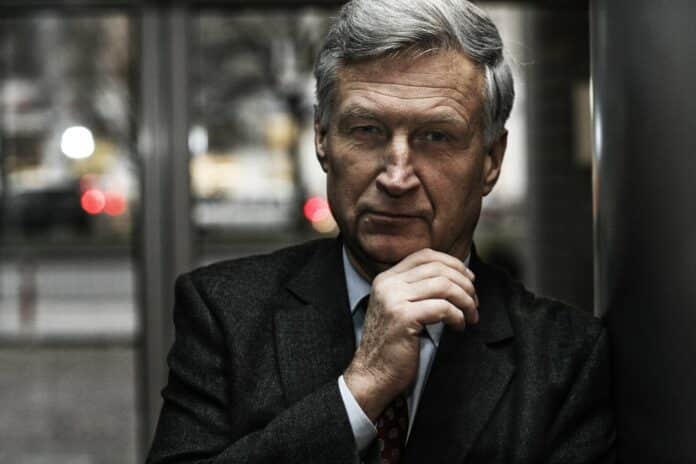All indications point towards the year-end being typically profitable for bulls in the stock market. November was the best month in many years for global stock markets. December is still looking good in Warsaw, but Wall Street has shown signs of fatigue.
In November, I noted that all signs were pointing towards the year-end being as usual, advantageous for the bulls in the stock market. That month ended just as predicted. On a global scale, it was the best in many years for stock markets. December in Warsaw continued to look promising, however, Wall Street showed signs of weariness.
Most concerning was the rise in everything: stocks, bonds, gold, cryptocurrencies… It was as if the investment risk had disappeared, fallen to zero. It was said that investors combined Goldilocks with Santa Claus. This Goldilocks is, of course, a reference to the fairytale and indicates that investors view the American economy as a “Goldilocks economy”, that is, an economy that grows at moderate inflation.
Saint Nicholas is commonly used to refer to the year-end rally when funds decorate their display windows. December will also see another factor which may harm the stock market bulls – the selling off of loss-making shares. Towards the end of the year, investors tend to sell shares on which they lose, in order to benefit from tax write-offs. They can then buy them back. However, there are no significant index-weighing shares causing large losses, so this process is likely to cause little harm.
Not only the lack of investor fear can be concerning, but also the fact that they have started to dismiss the words of Jerome Powell, Chairman of the Fed. During his last public appearance, he indeed mentioned that interest rates are at a level that “well restrains [economic activity]”, but he did not rule out another increase. However, markets reacted as if he had announced rate cuts.
This sort of provocation could prompt Powell to douse the markets with a bucket of cold water on December 13th (end of the FOMC meeting). Before this meeting, we will also see data from the US labor market and inflation data. These will certainly influence the Federal Reserve’s forecasts, but not the decision, as that is clear: rates will remain unchanged at 5.25-5.50%. Therefore, only the forecasts and what the Fed head says at his press conference will matter.
US macro data has recently been very diverse; for example, the ISM (logistics managers’ sentiment) index for industry fell below the key level of 50 pts. On the other hand, the same index for the service sector increased and is above that level. In addition, sub-indices of paid prices and the labor market increased significantly. The situation is, therefore, tricky to interpret, but there is nothing in this data that would force the Federal Open Market Committee to act.
Investors expect the Fed to cut interest rates four times in 2024. The likelihood that this will happen in March 2024 is close to fifty percent. These overly optimistic expectations are leading to a massive increase in bond prices, whose yield (10-year) has fallen from 5.00% in mid-October to 4.15%. We must remember that the Fed pointed out high yields, which helped in restrictive monetary policy. Now they aren’t helping anymore. I believe that investors are overdoing with their optimism, which could lead to a significant correction in the first quarter of 2024.
Piotr Kuczyński, Member of the Polish Economists Association, DI Xelion


















